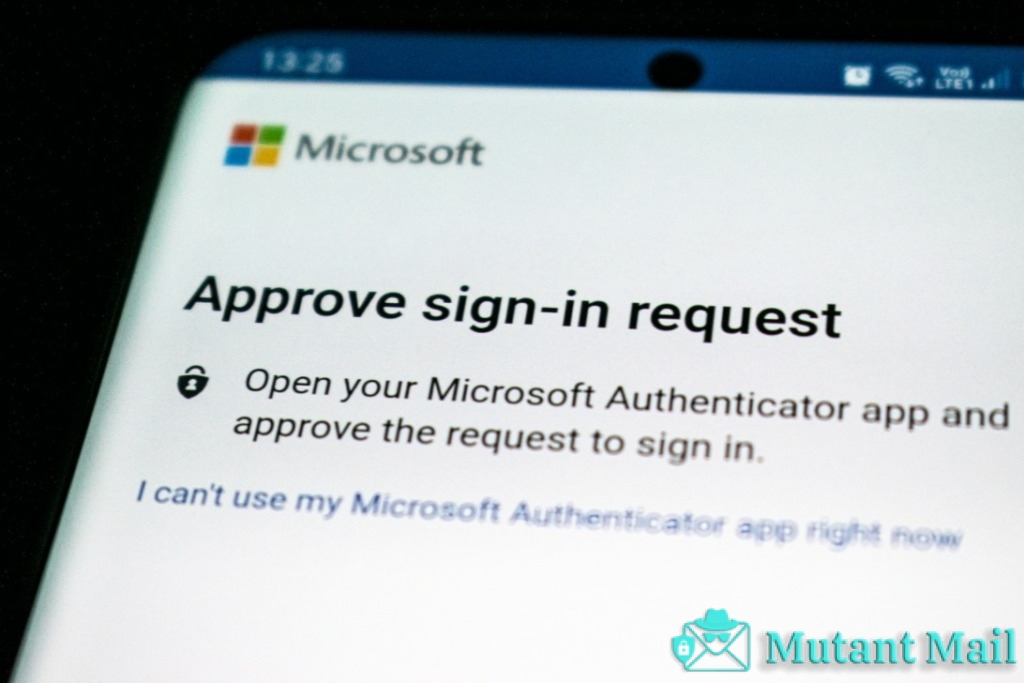In today’s digital age, email marketing has become an essential tool for businesses to reach their target audience. However, with the vast amount of emails being sent and received every day, it can be challenging for marketers to ensure that their emails are not only delivered but also opened and engaged with by recipients. This is where DMARC (Domain-based Message Authentication, Reporting & Conformance) comes in as a powerful tool to improve email deliverability and performance.
As the saying goes, “knowledge is power,”and understanding DMARC reports can provide valuable insights for marketers to optimize their email campaigns. By analyzing these reports, businesses can identify potential issues with their email authentication practices, such as phishing attempts or unauthorized use of their domain name, and take corrective actions to maintain brand reputation and protect customers from cyber threats. Furthermore, leveraging DMARC insights can help businesses enhance their email marketing strategy by tailoring content based on recipient behavior patterns and preferences to achieve better ROI.
Understanding DMARC and Its Benefits for Email Marketing
DMARC is a widely adopted email authentication protocol that provides significant benefits for email marketing by enabling domain owners to protect their brand reputation and improve email deliverability. It stands for Domain-based Message Authentication, Reporting, and Conformance, and it works by allowing domain owners to specify which servers are authorized to send emails on behalf of their domains. By implementing DMARC, businesses can reduce the risk of phishing attacks and other forms of email fraud, as well as increase the likelihood that their emails will be delivered to recipients’ inboxes.
One of the primary benefits of DMARC implementation is improved email security. This is achieved through a combination of authentication mechanisms that verify the sender’s identity and protect against spoofing or impersonation. DMARC also allows domain owners to receive detailed reports about how their emails are being handled by internet service providers (ISPs) and other mail receivers. These reports provide valuable insights into delivery rates, bouncebacks, spam complaints, and other metrics that can be used to optimize email campaigns.
Setting up DMARC for your email domain requires careful planning and execution. It involves configuring DNS records to specify which servers are authorized to send emails on behalf of your domain, as well as setting policies for how messages should be handled if they fail authentication checks. Additionally, it may require changes to your existing messaging infrastructure or third-party services used for sending emails. Nevertheless, with proper implementation and management, DMARC can help businesses achieve greater transparency and control over their email communications while improving overall deliverability rates.

Setting Up DMARC for Your Email Domain
Establishing a secure and trustworthy email domain requires implementing a protocol that verifies the authenticity of the sender’s identity. Domain-based Message Authentication, Reporting, and Conformance (DMARC) is one such protocol that reduces email fraud and spam by using Sender Policy Framework (SPF) and DomainKeys Identified Mail (DKIM) authentication methods. DMARC implementation steps include publishing a DMARC record in your domain’s DNS records, configuring SPF and DKIM for all authorized senders, setting up monitoring to receive DMARC reports from ISPs, and gradually enforcing strict DMARC policies.
To set up DMARC for your email domain, you need to follow some best practices that ensure maximum deliverability of your emails. Firstly, start with a “p=none”policy to monitor email traffic without blocking any emails. Then gradually move towards an “aspf=r”policy that rejects emails failing SPF checks or an “adkim=s”policy that rejects emails failing DKIM checks. Secondly, use the same domain name in both SPF and DKIM records to avoid confusion between different domains. Finally, make sure to align both the header-from address in the message body with either SPF or DKIM results.
Setting up DMARC for your email domain involves following certain guidelines based on industry-standard best practices. Monitoring DMARC reports regularly can help you identify any issues with your implementation before they become critical problems affecting deliverability or reputation scores. In the next section about analyzing dmarc reports, we will explore how these reports can provide valuable insights into email performance metrics like bounce rates or open rates.
Analyzing DMARC Reports
Analyzing email authentication reports can provide valuable information on the effectiveness of your email security measures. DMARC (Domain-based Message Authentication, Reporting and Conformance) reports, for instance, offer insights on who is sending emails on behalf of your domain and whether those messages pass or fail authentication checks. These reports help you identify potential sources of fraudulent activity and take appropriate action to protect your brand.
Report interpretation is key to making the most out of DMARC data. In particular, it’s important to differentiate between different types of failures: SPF (Sender Policy Framework) failures occur when an email appears to come from a domain that isn’t authorized by the sender’s DNS records; DKIM (DomainKeys Identified Mail) failures happen when a message’s digital signature doesn’t match its content; and DMARC policy failures arise when an email fails both SPF and DKIM checks or violates other rules set by the domain owner. By analyzing these different types of failures, you can determine which areas need improvement in terms of email security.
Improving email deliverability requires a holistic approach that takes into account not only technical issues but also content quality, subscriber engagement, and reputation management. While analyzing DMARC reports can help you pinpoint weaknesses in your authentication setup, delivering emails successfully also depends on factors such as list hygiene practices (e.g., removing inactive subscribers), personalization strategies (e.g., segmenting audiences based on interests), and monitoring feedback loops (e.g., handling complaints promptly). By adopting best practices across all aspects of email marketing, you can maximize your chances of reaching the inbox while maintaining high levels of trust with your audience.
Improving Email Deliverability
Effective email deliverability requires a multifaceted approach that addresses technical and non-technical factors to overcome the challenges associated with spam filters. Spam filters are designed to prevent unwanted emails from reaching users’ inboxes, but they sometimes block legitimate emails as well. This can result in lower open rates, click-through rates, and conversions. To improve email deliverability, it is important to implement email authentication protocols such as DMARC (Domain-based Message Authentication, Reporting & Conformance) which helps identify and prevent fraudulent emails.
Email authentication protocols like DMARC provide a way for domain owners to specify which servers are authorized to send emails on their behalf. It also provides feedback on any unauthorized attempts made by spammers trying to impersonate their brand or domain. Implementing DMARC can help increase the trustworthiness of your emails among ISPs (Internet Service Providers), which in turn improves your chances of landing in the inbox rather than getting blocked by spam filters.
Apart from implementing email authentication protocols such as DMARC, there are other measures you can take to improve email deliverability. These include regularly cleaning up your contact list by removing inactive subscribers or those who have marked your emails as spam; avoiding spam trigger words in subject lines and body text; optimizing images and formatting for mobile devices; and testing different aspects of your email campaigns such as subject lines, CTAs (Call-to-Action), and layout designs. By incorporating these best practices into your overall email marketing strategy, you can enhance the performance of your campaigns while maintaining high levels of delivery rates.
Incorporating effective tactics such as email authentication along with best practices will not only improve deliverability but also increase engagement rates resulting in higher ROI for businesses. The next section will delve deeper into how enhancing an existing marketing strategy with optimization tools that align with customer preferences can be beneficial for businesses looking to maximize their reach through their digital platforms.

Enhancing Your Email Marketing Strategy
Enhancing your email marketing strategy involves incorporating optimization tools that align with customer preferences to increase the reach of your digital platforms. Data-driven segmentation is a critical aspect of any effective email marketing campaign. By analyzing the demographics, behavior, and interests of your subscribers, you can tailor content to meet their needs and increase engagement.
Personalization techniques are another crucial element for enhancing email marketing performance. Personalized emails have been shown to generate higher open rates, click-through rates, and conversions compared to generic messages. This approach involves using subscriber data such as name, location, past purchases or browsing history to deliver targeted messaging that resonates with individual interests.
Utilizing data-driven segmentation and personalization techniques in email marketing can significantly improve ROI for businesses. However, these strategies require careful planning and execution. In the subsequent section about leveraging dmarc insights for better ROI, we will explore how implementing DMARC authentication can help reduce fraudulent emails from reaching subscribers’ inboxes while improving overall deliverability metrics.
Leveraging DMARC Insights for Better ROI
In the previous subtopic, we discussed enhancing your email marketing strategy. Now, let’s dive deeper into how you can leverage insights from DMARC reports to optimize your return on investment and track performance.
DMARC (Domain-based Message Authentication, Reporting, and Conformance) is an email authentication protocol that helps organizations protect their domain from email fraud and abuse. It provides valuable insights into who is sending emails on your behalf and how they are performing. Leveraging these insights can help you identify areas for improvement in your email campaigns and ultimately increase ROI.
One way to use DMARC data for ROI optimization is by analyzing the sender domains that are sending emails on behalf of your organization. By identifying which domains have a high percentage of successful deliveries, clicks, opens, and conversions, you can focus more resources on those domains to increase engagement with your audience. On the other hand, if certain domains have low performance metrics, you may want to reconsider using them as senders or adjust your messaging strategy for those audiences. Overall, leveraging DMARC data can provide valuable insights for optimizing marketing efforts and improving ROI tracking.
Conclusion
In conclusion, DMARC reports provide valuable insights for improving email performance and enhancing your overall email marketing strategy. By setting up and analyzing DMARC reports, you can gain a better understanding of how your emails are being delivered and identify any issues that may be impacting deliverability. This allows you to make necessary adjustments and optimize your email campaigns for better results.
One interesting statistic to consider is that only 21.3% of domains have implemented DMARC, despite its proven effectiveness in reducing phishing attacks and improving email deliverability (Valimail, 2021). By taking advantage of this powerful tool, you can stay ahead of the curve and ensure that your emails are reaching their intended audience while maximizing ROI. With the right approach to DMARC implementation and analysis, you can unlock new opportunities for growth and success in your email marketing efforts.

